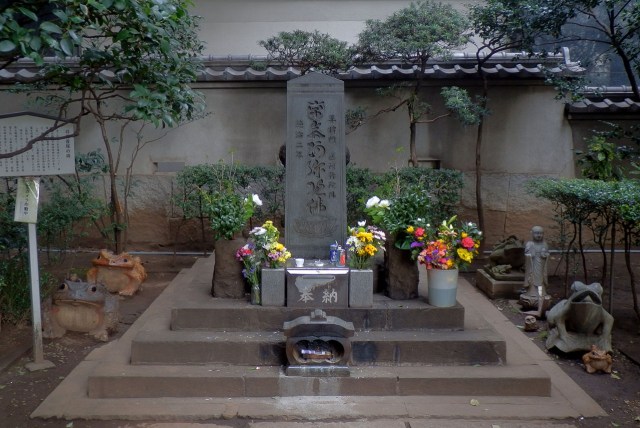
“More care than a nuclear weapon” required to restore the burial mound dedicated to Japan’s most vengeful spirit.
There are a lot of built-up areas in Tokyo, and one of the places where property is particularly sought after and land is at a premium is the swanky Otemachi district in Chiyoda Ward. Home to global financial institutions, and smack-bang between the Imperial Palace and Tokyo Station, Otemachi is filled with shiny high-rises, but behind all the glitz is a long-time resident who strikes fear in the hearts of even the biggest companies in the area.
▼ That resident is Taira no Masakado.
Often referred to as the “First Samurai“, due to the fact that nobody had headed up a self-governing party before him, Masakado rebelled against the central government in 939, back when the government and the capital were located in Kyoto. Masakado was a fearless fighter who conquered two northern provinces, captured a governor, murdered his warrior uncle and attempted to set up a rival court in the north, declaring himself to be the new Emperor of Japan. This angered the Emperor at the time, who put a bounty on his head, leading to Masakado’s death in Shimosa Province, located in modern-day Chiba and Ibaraki prefectures, at the hands of his cousin in 940.
However, his story doesn’t end there. Masakado’s death was only the beginning of another chapter of influence for the restless warrior, whose head was taken to Kyoto and put on display. After that, legends say the head wound up in a small fishing village called Shibasaki in what would later become Otemachi in Tokyo. The head was said to be enshrined in a kubizuka, a burial mound for severed heads, and that mound remains today, protected on a parcel of land that is now worth millions of dollars.
▼ “Masakadozuka”, or “Taira no Masakado’s Grave“, is a popular tourist spot today
The site has been regularly maintained with repairs being carefully carried out since 1961. Carefully is the prime word here, as Masakado’s spirit has been anything but restful over the years, and it’s said that any disturbance of the land may bring about calamity.
After the Great Kanto Earthquake in 1923, for instance, a temporary Ministry of Finance building was built on the site as part of the city’s urban redevelopment plan.
▼ The mound, shortly after the Great Kanto Earthquake
However, 14 people, including construction personnel, ministry officials, and even the Minister of Finance, lost their lives inside the building over a space of five years, and so it was demolished. Believing Masakado’s vengeful spirit was to blame, the mound was then restored with a stone slab engraved with the Namu Amida Butsu (I entrust myself to Amida) prayer, and a requiem monument was installed during a special ceremony conducted by a priest from Kanda Shrine to appease the spirit.
Oh, and if you’re wondering why there are frogs surrounding the grave, that’s because Masakado’s daughter, Takiyasha, who lived in the ruins of her father’s manor in Shimosa after his death, raised frogs and was rumoured to be a sorceress.
The Japanese word for frog, “kaeru“, also means “to return“, hinting that Takiyasha willed Masakado’s spirit to return, which could be the reason for his restlessness. These days, people wishing for the return of lost children or a return to lost positions at work visit the site and leave frog figures.
▼ This 1884 ukiyo-e woodblock print by Yoshu Chikanobu shows Takiyasha with Masakado and a frog above her.
While it’s widely believed that disturbing Masakadozuka’s burial mound will result in disaster and misfortune, it’s also said that neglect can bring about calamities as well. It’s a treacherous line to walk, but this year the mound is being restored, and the utmost care is being taken with the maintenance, which will be the sixth carried out since 1961.
Steps have been taken over the years to ensure the spirit is pleased, with the adjacent Mitsubishi UFJ Bank opening an account under the name of “Taira no Masakado”, which is used by the local volunteer group looking after the site. The “Masakadozuka Preservation Society” was also established with the participation of neighbouring companies to help maintain the site.
Still, with all these precautions being taken, people are remaining cautious about this year’s works, which are scheduled to take place from November 2020 through to the end of April 2021. Twitter user Kikuchiyo (@kikuchiyo_0518) has been keeping a watchful eye over the proceedings, sharing updates from the site in a series of photos.
▼ On 21 November, temporary panels had been set up around the perimeter of the site.
▼ A Shinto altar and offertory box have been placed inside the south-east facing wall for visitors wishing to pray.
Kikuchiyo shared the photos above in a tweet that read:
“Today’s Masakadozuka…Our country’s most wrathful spirit is being treated with the utmost care, more care than a nuclear weapon.”
It really does look like the utmost care is being taken, and the following day, Kikuchi had a peek inside and saw that the actual monument had been taken away.
なんと、首塚が消滅!#将門 #平将門 #首塚 #帝都物語 pic.twitter.com/0WsfWjpM3X
— 菊千代 (@kikuchiyo_0518) November 22, 2020
On 28 November, a Saturday, there was no action on the grounds, but it was evident that the trees on the site had all been cut down.
向かいのビル2階ファミマの前から見られます。
— 菊千代 (@kikuchiyo_0518) November 28, 2020
境内の大木も全て伐ってしまったのは残念。#将門 #平将門 #首塚 #帝都物語 pic.twitter.com/euXYPAa5QD
Kikuchi says people were often seen meditating under the shade of these trees.
大きいの一本だけ残して、全部伐採しちゃったのか。
— 菊千代 (@kikuchiyo_0518) November 24, 2020
木の陰で瞑想している人よく見かけました。#将門 #平将門 #首塚 pic.twitter.com/hBUkalzysN
Unlike previous repairs, this is a major renovation project. The Preservation Society says they hope to “improve the safety and manageability of the site“, with the aim of creating “a new Masakadozuka suitable for the coming era“.
石灯籠はいずこへ?#将門 #平将門 #首塚 pic.twitter.com/L5CvhEnr1W
— 菊千代 (@kikuchiyo_0518) November 29, 2020
For such a busy downtown area filled with skyscrapers, it’s amazing to think that this is one spot nobody dares build upon.
正面から。今日は参拝者がひっきりなしに訪れています。 pic.twitter.com/HCXvyGcio9
— 菊千代 (@kikuchiyo_0518) November 28, 2020
As Kikuchi’s tweets went viral, with people around Japan fearing for the consequences, Kikuchi pointed out that the nearby Imperial Palace should be safe from any calamities, given that the statues of samurai warrior Kusunoki Masashige and high-ranking Japanese official Wake no Kiyomaro are guarding it.
幸い皇居は楠木正成と和気清麻呂の銅像が結界を張っているので大丈夫。 pic.twitter.com/qwwn49cE8P
— 菊千代 (@kikuchiyo_0518) November 22, 2020
After Kikuchi shared these updates online, one Twitter user made an unnerving discovery. On 25 November, when the monument to the warrior’s head was said to be settling into its new temporary home at Kanda Shrine in Tokyo, there was a Magnitude 4.3 earthquake in Ibaraki Prefecture.
将門公の首塚移動した日に胴を祀っている茨城で地震があったってツイート見たので、また地震あったから神社どの辺にあるのか見てみたら震源地だった pic.twitter.com/RFA85yZbd6
— ヨ (@__4o5__) November 25, 2020
That might not sound significant until you look at the map and realise that the epicentre of the earthquake was located incredibly close to a temple called Enmyoin. And why is that significant? Because this is is the location of Masakado’s dozuka, or in other words, his “torso mound“.
Masakado’s headless body was said to be buried by his younger brother at the spot where Enmyoin stands, and the torso grave still exists today (pictured below).
To make things even more eerie, the stone slab engraved with the Namu Amida Butsu prayer for rebirth in the Pure Land — originally located at the head mound of Masakado in Otemachi to placate the spirit — is now located to the west of the body mound at Enmyoin, having been donated and relocated there by Tokyo’s Masakadozuka Preservation Society in 1975.
▼ Enmyoin
So…was this an eerie coincidence or could it be yet another instance of Masakado’s restless soul making its presence felt — literally — across the country? It’s hard to say, but either way, people are anxious to find out if the renovations to “improve the safety and manageability of the site” in Tokyo will run smoothly and result in safety for us all.
Here’s hoping the site doesn’t unleash the same kind of misfortune in Tokyo that it reportedly did back in the 13th century, when the people of Edo were said to be cursed with a plague after the burial mound for the severed head was tampered with. But then again, we are currently in the third wave of the coronavirus pandemic here in Tokyo, with November coincidentally seeing the highest number of cases to date.
Let’s all pray that the spirit of Masakado will rest in peace, so we can get back to the days when we were worried about old torii gates of unknown origin being torn down. Ah, those were the days…
Sources: Twitter/@kikuchiyo_0518, Masakadozuka Preservation Society via Hachima Kikou
Featured image: Wikipedia/Asanagi
Insert images: Wikipedia (1, 2), Twitter/@kikuchiyo_0518, Wikipedia/Asanagi, Wikipedia/Toyohara Chikanobu, Twitter/@kikuchiyo_0518, Wikipedia/Ocdp
● Want to hear about SoraNews24’s latest articles as soon as they’re published? Follow us on Facebook and Twitter!


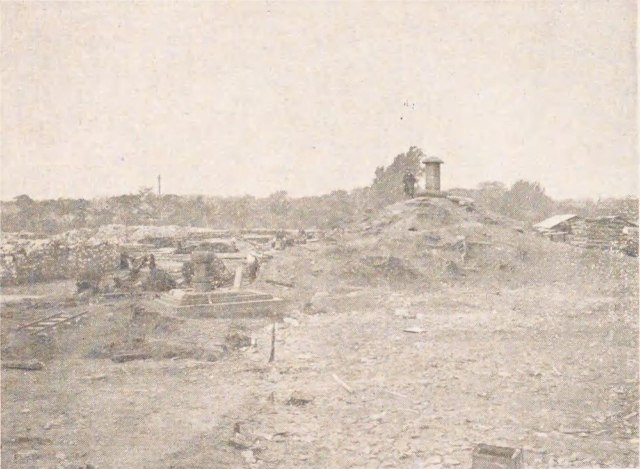
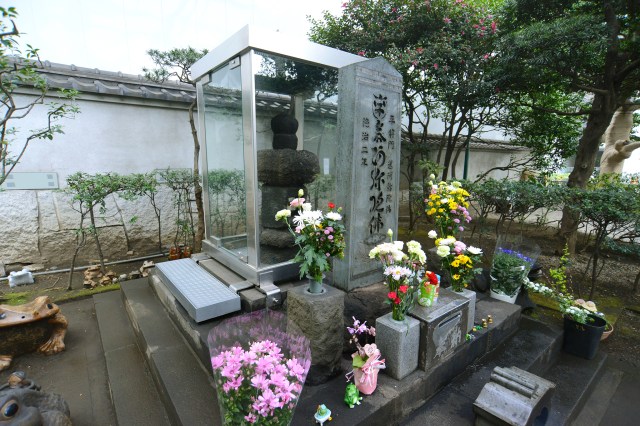
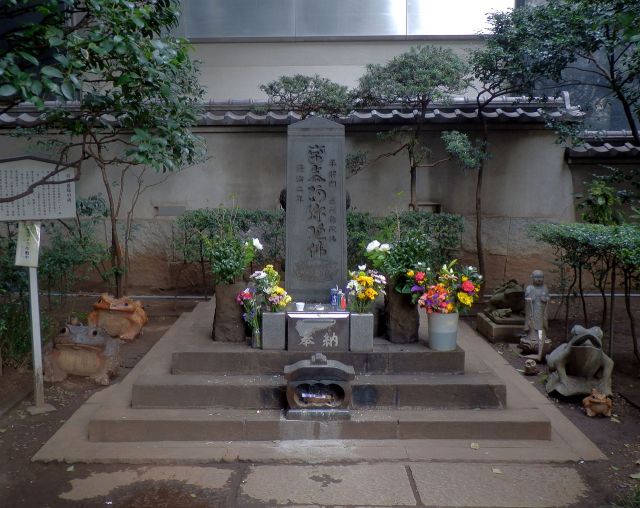
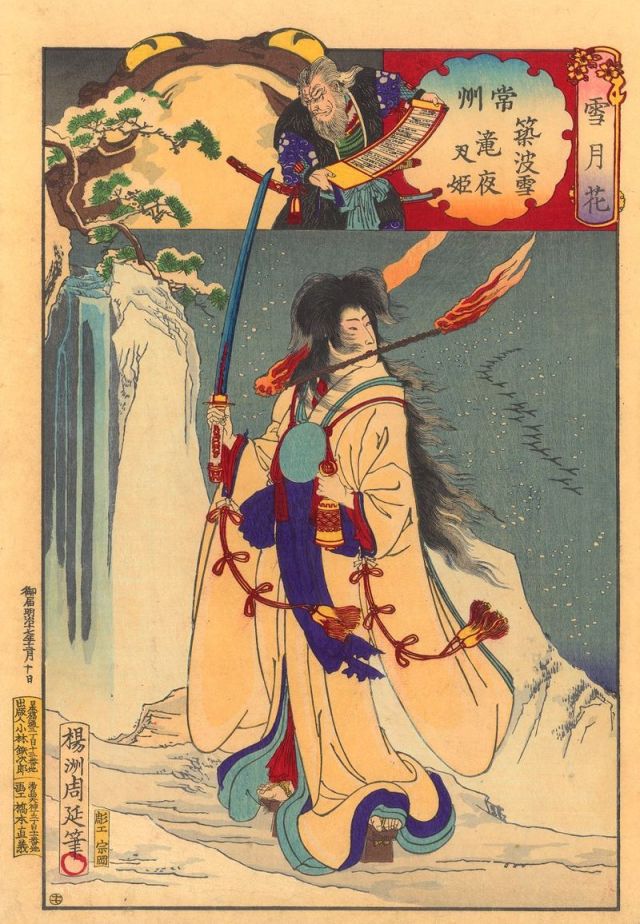
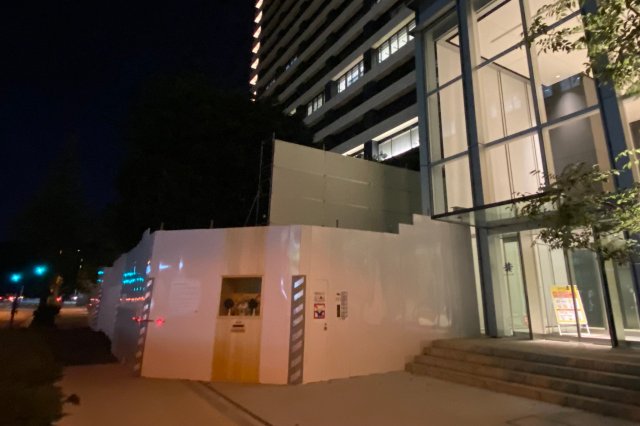
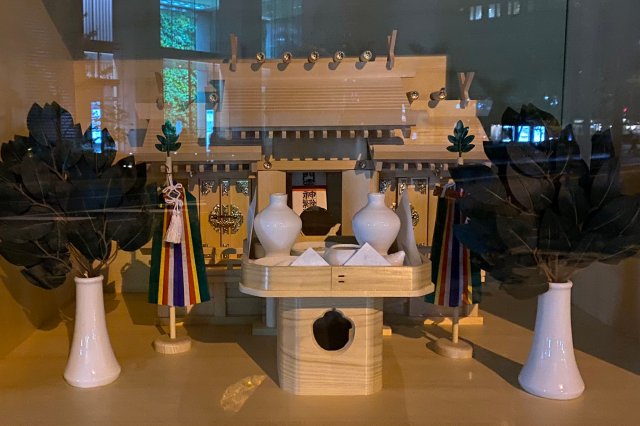
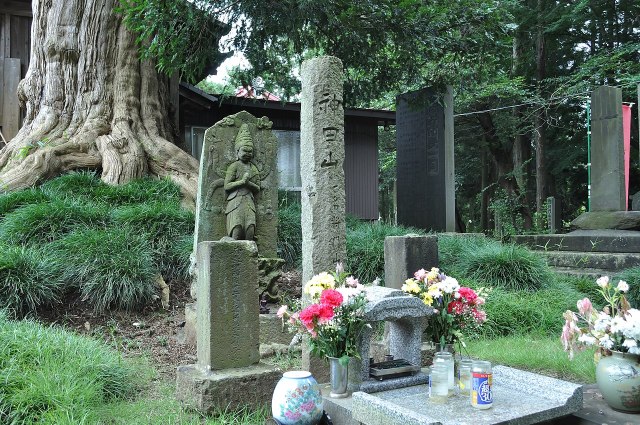
 Tokyo’s angriest ghost gets a brand-new grave for his millennium-old severed head【Photos】
Tokyo’s angriest ghost gets a brand-new grave for his millennium-old severed head【Photos】 A visit to Japan’s forbidden forest of Yawata no Yabushirazu
A visit to Japan’s forbidden forest of Yawata no Yabushirazu Police looking for man who threw paper airplane into Hiroshima atomic bomb monument
Police looking for man who threw paper airplane into Hiroshima atomic bomb monument Japan’s “killing stone” splits in two, possibly unleashing evil nine-tailed fox spirit
Japan’s “killing stone” splits in two, possibly unleashing evil nine-tailed fox spirit Mysterious mountain village is home to Christ’s grave and an ancient pyramid
Mysterious mountain village is home to Christ’s grave and an ancient pyramid Foreigner’s request for help in Tokyo makes us sad for the state of society
Foreigner’s request for help in Tokyo makes us sad for the state of society Mikado Coffee is a 76-year-old coffee chain with a major celebrity connection
Mikado Coffee is a 76-year-old coffee chain with a major celebrity connection Japan’s summertime towelket pillowcases are even better with the addition of Ghibli stars【Photos】
Japan’s summertime towelket pillowcases are even better with the addition of Ghibli stars【Photos】 Seaside scenery, history, and so many desserts on Yokohama’s Akai Kutsu【Japan Loop Buses】
Seaside scenery, history, and so many desserts on Yokohama’s Akai Kutsu【Japan Loop Buses】 Ghibli Park now selling “Grilled Frogs” from food cart in Valley of Witches
Ghibli Park now selling “Grilled Frogs” from food cart in Valley of Witches Japanese city loses residents’ personal data, which was on paper being transported on a windy day
Japanese city loses residents’ personal data, which was on paper being transported on a windy day Osaka governor suggests lowering voting age to 0 to curb population decline
Osaka governor suggests lowering voting age to 0 to curb population decline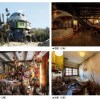 Ghibli Park opens final area to first visitors, with stunning new attractions and shops 【Videos】
Ghibli Park opens final area to first visitors, with stunning new attractions and shops 【Videos】 Our Japanese-language reporter tries eel cola so you don’t have to 【Taste Test】
Our Japanese-language reporter tries eel cola so you don’t have to 【Taste Test】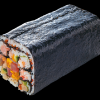 The greatest sushi roll in Japanese history is actually nine sushi rolls in one【Photos】
The greatest sushi roll in Japanese history is actually nine sushi rolls in one【Photos】 McDonald’s new Happy Meals offer up cute and practical Sanrio lifestyle goods
McDonald’s new Happy Meals offer up cute and practical Sanrio lifestyle goods Japanese ramen restaurants under pressure from new yen banknotes
Japanese ramen restaurants under pressure from new yen banknotes French Fries Bread in Tokyo’s Shibuya becomes a hit on social media
French Fries Bread in Tokyo’s Shibuya becomes a hit on social media Red light district sushi restaurant in Tokyo shows us just how wrong we were about it
Red light district sushi restaurant in Tokyo shows us just how wrong we were about it New private rooms on Tokaido Shinkansen change the way we travel from Tokyo to Kyoto
New private rooms on Tokaido Shinkansen change the way we travel from Tokyo to Kyoto Tokyo Tsukiji fish market site to be redeveloped with 50,000-seat stadium, hotel, shopping center
Tokyo Tsukiji fish market site to be redeveloped with 50,000-seat stadium, hotel, shopping center Beautiful Ghibli sealing wax kits let you create accessories and elegant letter decorations【Pics】
Beautiful Ghibli sealing wax kits let you create accessories and elegant letter decorations【Pics】 Secret Kitchen bento serves Japanese flowers, birds, wind and moon in a box, but is it worth it?
Secret Kitchen bento serves Japanese flowers, birds, wind and moon in a box, but is it worth it? New definition of “Japanese whiskey” goes into effect to prevent fakes from fooling overseas buyers
New definition of “Japanese whiskey” goes into effect to prevent fakes from fooling overseas buyers Our Japanese reporter visits Costco in the U.S., finds super American and very Japanese things
Our Japanese reporter visits Costco in the U.S., finds super American and very Japanese things Studio Ghibli releases Kiki’s Delivery Service chocolate cake pouches in Japan
Studio Ghibli releases Kiki’s Delivery Service chocolate cake pouches in Japan All-you-can-drink Starbucks and amazing views part of Tokyo’s new 170 meter-high sky lounge
All-you-can-drink Starbucks and amazing views part of Tokyo’s new 170 meter-high sky lounge More foreign tourists than ever before in history visited Japan last month
More foreign tourists than ever before in history visited Japan last month New Pokémon cakes let you eat your way through Pikachu and all the Eevee evolutions
New Pokémon cakes let you eat your way through Pikachu and all the Eevee evolutions Disney princesses get official manga makeovers for Manga Princess Cafe opening in Tokyo
Disney princesses get official manga makeovers for Manga Princess Cafe opening in Tokyo Sales of Japan’s most convenient train ticket/shopping payment cards suspended indefinitely
Sales of Japan’s most convenient train ticket/shopping payment cards suspended indefinitely Sold-out Studio Ghibli desktop humidifiers are back so Totoro can help you through the dry season
Sold-out Studio Ghibli desktop humidifiers are back so Totoro can help you through the dry season Japanese government to make first change to romanization spelling rules since the 1950s
Japanese government to make first change to romanization spelling rules since the 1950s Ghibli founders Toshio Suzuki and Hayao Miyazaki contribute to Japanese whisky Totoro label design
Ghibli founders Toshio Suzuki and Hayao Miyazaki contribute to Japanese whisky Totoro label design Doraemon found buried at sea as scene from 1993 anime becomes real life【Photos】
Doraemon found buried at sea as scene from 1993 anime becomes real life【Photos】 Tokyo’s most famous Starbucks is closed
Tokyo’s most famous Starbucks is closed One Piece characters’ nationalities revealed, but fans have mixed opinions
One Piece characters’ nationalities revealed, but fans have mixed opinions We asked a Uniqlo employee what four things we should buy and their suggestions didn’t disappoint
We asked a Uniqlo employee what four things we should buy and their suggestions didn’t disappoint Mystery Tourist Spot: Merlions in Japan?
Mystery Tourist Spot: Merlions in Japan? Bones of over 1,500 people found at Osaka Station area construction site
Bones of over 1,500 people found at Osaka Station area construction site At this Kyoto shrine, be careful what you wish for—and how—, because you just might get it
At this Kyoto shrine, be careful what you wish for—and how—, because you just might get it New onsen facility in the heart of Tokyo’s business district to be ready for Olympics
New onsen facility in the heart of Tokyo’s business district to be ready for Olympics Converse All-Stars team up with two all-stars of Japanese art for Wave, Skull ukiyo-e shoes【Pics】
Converse All-Stars team up with two all-stars of Japanese art for Wave, Skull ukiyo-e shoes【Pics】 After all these years, there’s still one place in Tokyo Godzilla won’t ever touch
After all these years, there’s still one place in Tokyo Godzilla won’t ever touch Strong earthquake hits Hokkaido in Japan, dozens missing and injured
Strong earthquake hits Hokkaido in Japan, dozens missing and injured Fossil of an extinct crab discovered in a pillar at Tokyo Station
Fossil of an extinct crab discovered in a pillar at Tokyo Station Croissant gyoza: Pie-like dumplings take Japan by storm
Croissant gyoza: Pie-like dumplings take Japan by storm We try rainbow ramen, the happy noodles people in Japan are going crazy for 【Taste Test】
We try rainbow ramen, the happy noodles people in Japan are going crazy for 【Taste Test】 Mayhem at Uniqlo in Japan as customers fight to grab the Jil Sander collection
Mayhem at Uniqlo in Japan as customers fight to grab the Jil Sander collection Hanazono Jinja Shrine: Lanterns, stalls and rakes at annual Tori no Ichi cock festival in Tokyo
Hanazono Jinja Shrine: Lanterns, stalls and rakes at annual Tori no Ichi cock festival in Tokyo Akihabara’s otaku shrine celebrates PlayStation 5 launch with ethereal one-night event
Akihabara’s otaku shrine celebrates PlayStation 5 launch with ethereal one-night event Strong earthquake hits Japan as anniversary of Fukushima disaster approaches【Photos, Videos】
Strong earthquake hits Japan as anniversary of Fukushima disaster approaches【Photos, Videos】 U.S. military in Japan bulk buys Japanese scallops as China’s Japanese seafood ban continues
U.S. military in Japan bulk buys Japanese scallops as China’s Japanese seafood ban continues
Leave a Reply